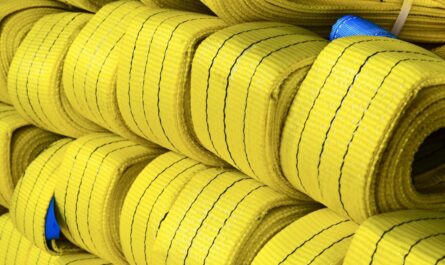Composition and Properties of Styrofoam
Polystyrene foam, also known as Styrofoam, is a lightweight plastic material that is produced from polystyrene resin. The polystyrene resin is produced through the polymerization of the monomer styrene. To produce Styrofoam, gas bubbles are introduced into the molten polystyrene resin during manufacturing. Common gas used is pentane, but other hydrocarbon gases can also be used.
The gas bubbles get trapped in the polystyrene resin as it sets, resulting in a solid foam structure. This gives Styrofoam its trademark low density and insulation properties. Styrofoam has closed-cell structure which means the gas bubbles are enclosed and do not connect to each other. This closed-cell structure makes Styrofoam water resistant. It is also resistant to moisture, chemicals and corroding. However, it is not very durable and can break down when exposed to sunlight for extended periods.
Forms and Manufacturing of Styrofoam
Styrofoam is manufactured in two main forms – extruded polystyrene foam (XPS) and expanded Polystyrene Foam (EPS).
XPS foam has high resistance to moisture and vapor due to its closed cellular structure. It is manufactured by mixing gas into molten polystyrene resin under high pressure and then extruding it through a die. This gives XPS foam its trademark rigid, moisture resistant properties suitable for thermal insulation in construction.
EPS foam has lower density and better thermal insulation properties compared to XPS. It is manufactured by expanding polystyrene beads in a high pressure vessel using gas like pentane. This causes the beads to fuse together and form a solid foam structure. The resulting EPS foam has an open-cell structure which makes it lightweight, flexible and readily moldable.
Uses of Styrofoam in Packaging
Packaging is a major end use market for Styrofoam, accounting for over 30% of total polystyrene production. Both EPS and XPS foams find extensive usage in packaging applications due to their low cost, lightweight and shock absorption properties.
EPS foam is commonly used for packaging fragile or perishable goods that need protection. Pre-cut pieces of EPS foam are often used to cushion electronic items, appliances, glassware and other fragile shipments. Due to its moldability, EPS foam can be die-cut to exact sizes and shapes for form fitting applications. It is also used to make protective liners for perishable foods that need thermal insulation during transit.
XPS foam sheets find usage in construction of coolers and ice chests where thermal insulation is important alongside impact resistance. Its rigid board structure also makes it suitable for construction of boxes and crates used in bulk transportation of goods. Sheets of XPS foam are often used in layering of shipments to prevent damage from shocks and vibration during transportation.
Construction Applications of Polystyrene Foam
Thermal insulation is a key property that Styrofoam leverage in construction applications. Both XPS and EPS foams are extensively used as foam insulation boards in buildings.
XPS foam insulation boards have high resistance to vapor diffusion. polystyrene foam They are commonly used as exterior rigid insulation for walls, foundations and below grade applications where moisture resistance is important. The closed-cell structure of XPS foam makes it suitable for below ground installations and prevents moisture penetration. Its rigid board structure also enhances the durability and stability of foundation walls.
On the other hand, EPS foam boards are preferred for interior insulation in walls and attics due to their better insulation and lightweight properties. The semi-rigid boards can be cut-to-size and installed between wall studs or in attic floors. EPS foam also finds usage as cavity wall insulation where it is pumped into wall cavities in liquid form before hardening.
Overall, Styrofoam play a crucial role in insulation for energy efficiency in modern buildings. Their low conductivity and cost effectiveness make them popular building insulation materials worldwide.
Other Applications
Apart from packaging and construction, Styrofoam also find application in number of other areas owing to their properties:
– Marine buoyancy – EPS beads are encapsulated in plastic or wooden buoys to provide buoyancy for floating markers.
– Recreational equipment – EPS beads are incorporated in surfboards, fishing rods and manufacture of life jackets to provide buoyancy.
– Automotive – XPS foam is commonly used in dashboards, doors and other interior components requiring sound insulation in cars.
– Medical – Low density EPS foam finds usage in instant cold packs, wrist braces and shoe inserts for its flexibility and thermal properties.
– Horticulture – EPS mulch mats are used around plants as weed barrier and to retain soil moisture.
With versatile properties like light weight, insulation, shock absorption and low cost, Styrofoam have widespread industrial usage. Further innovations in manufacturing have enabled both XPS and EPS foams to deliver high performance for diverse applications. Their recyclability also makes them environmentally friendly materials. Overall, Styrofoam will continue playing a major role across various sectors owing to their unique advantages.
*Note:
1.Source: Coherent Market Insights, Public sources, Desk research
2.We have leveraged AI tools to mine information and compile it
About Author - Money Singh
Money Singh is a seasoned content writer with over four years of experience in the market research sector. Her expertise spans various industries, including food and beverages, biotechnology, chemicals and materials, defense and aerospace, consumer goods, etc. LinkedIn Profile



